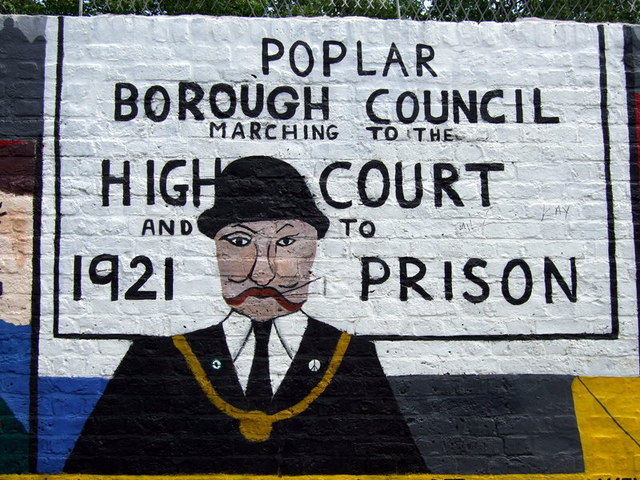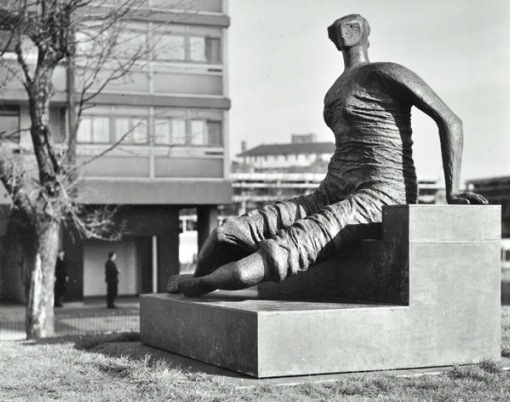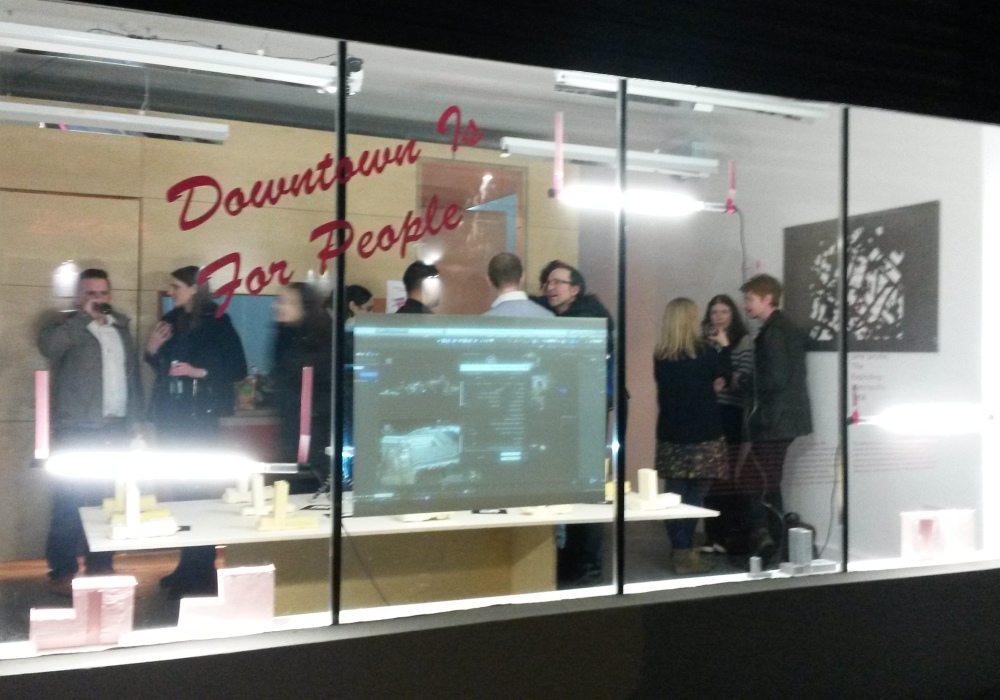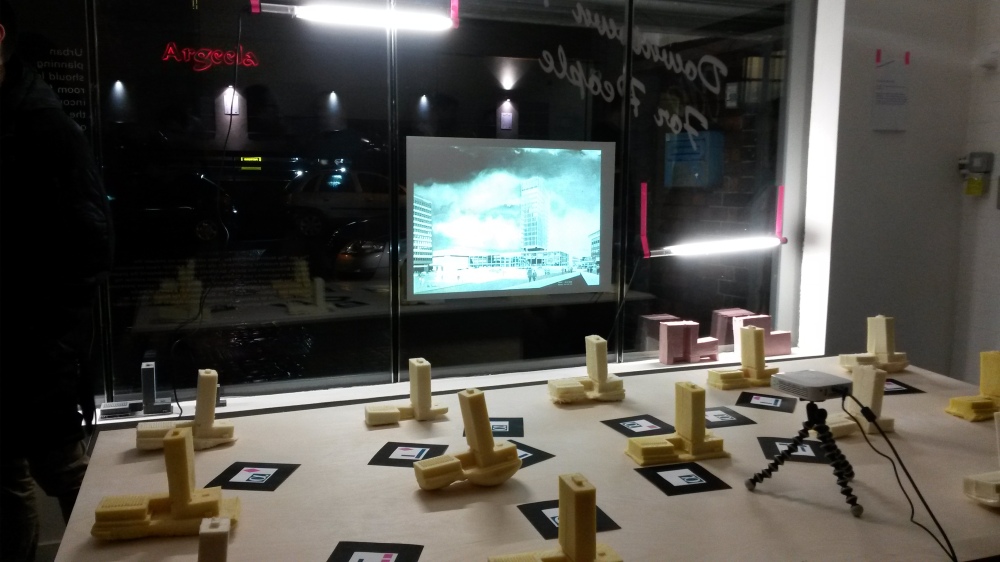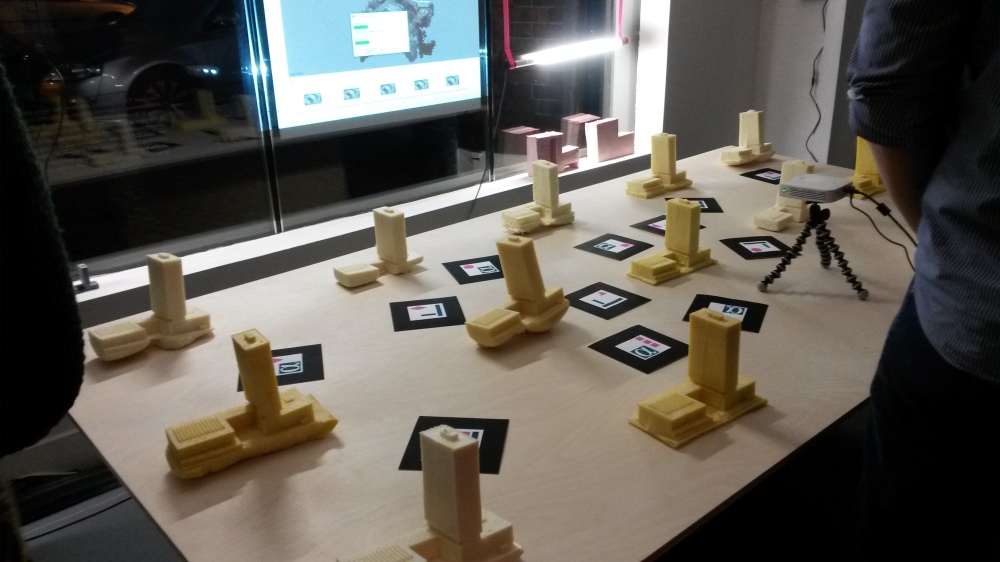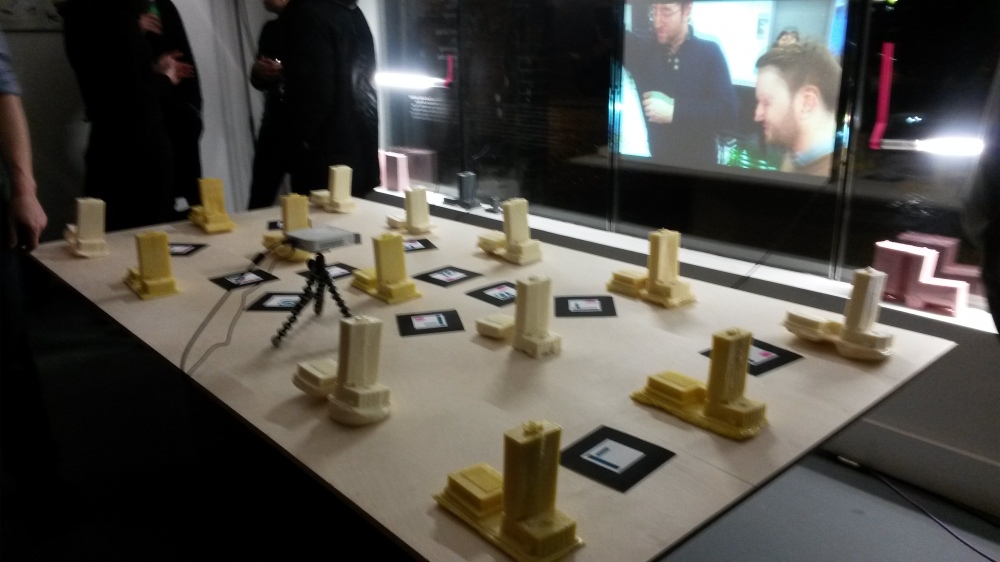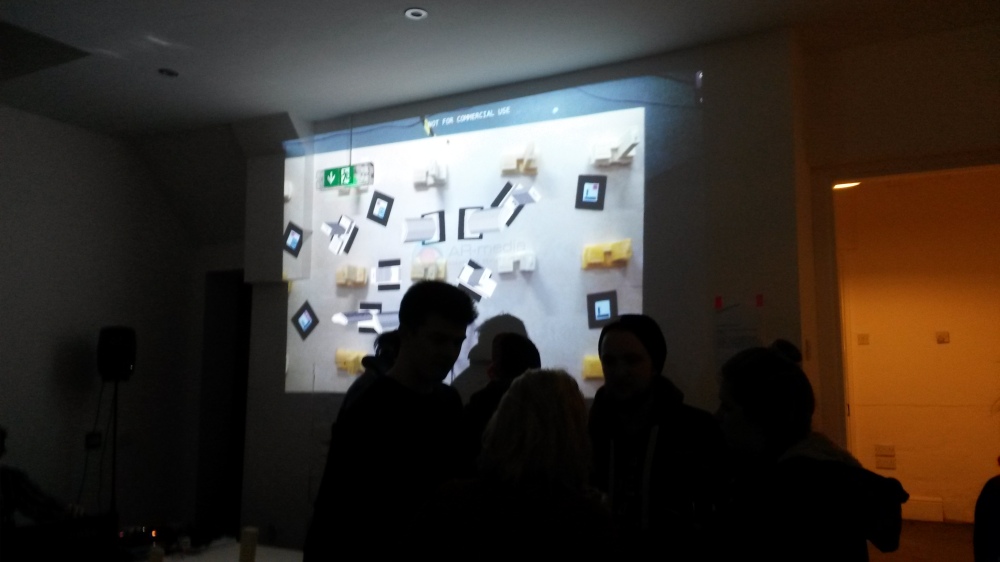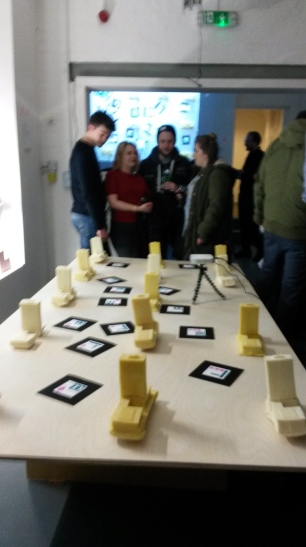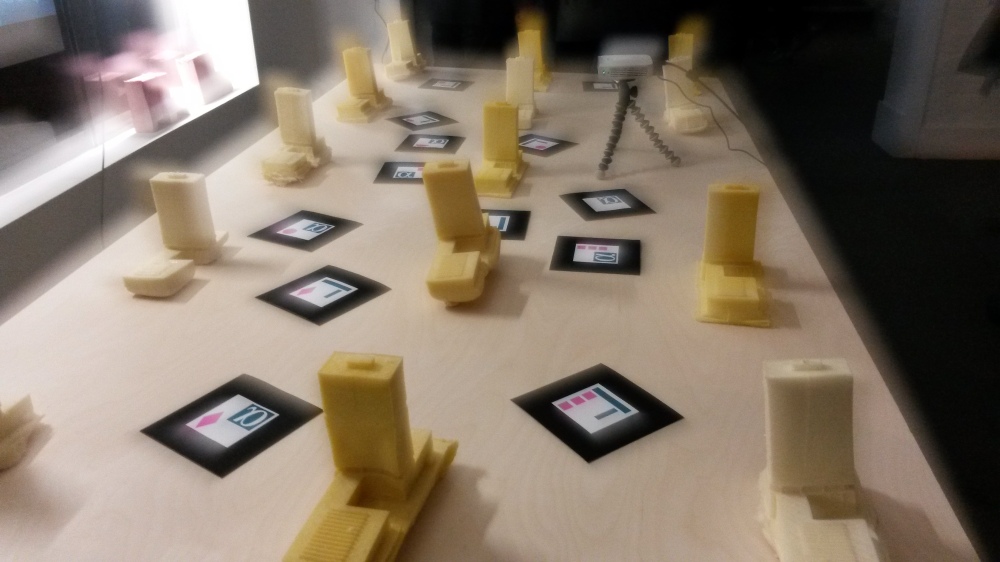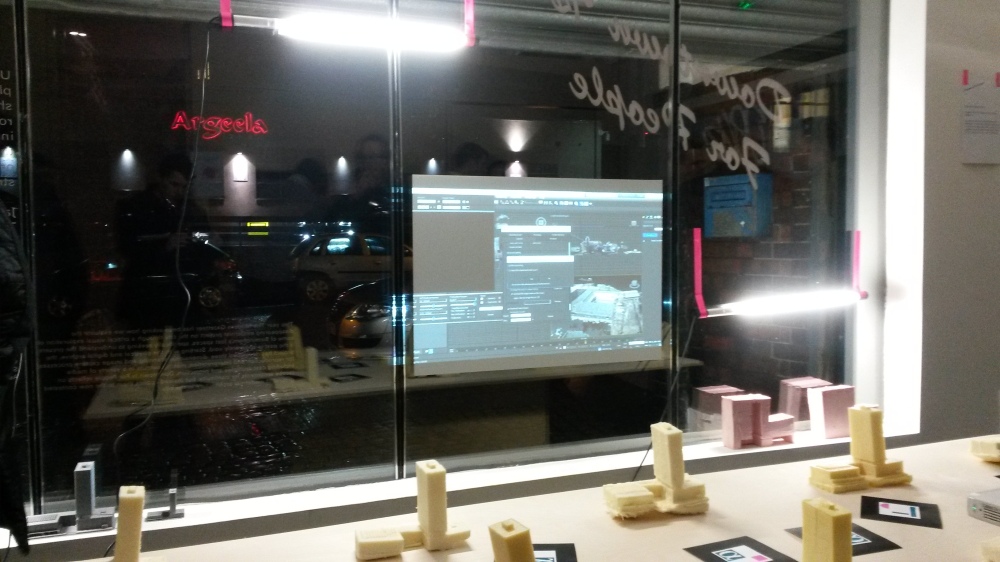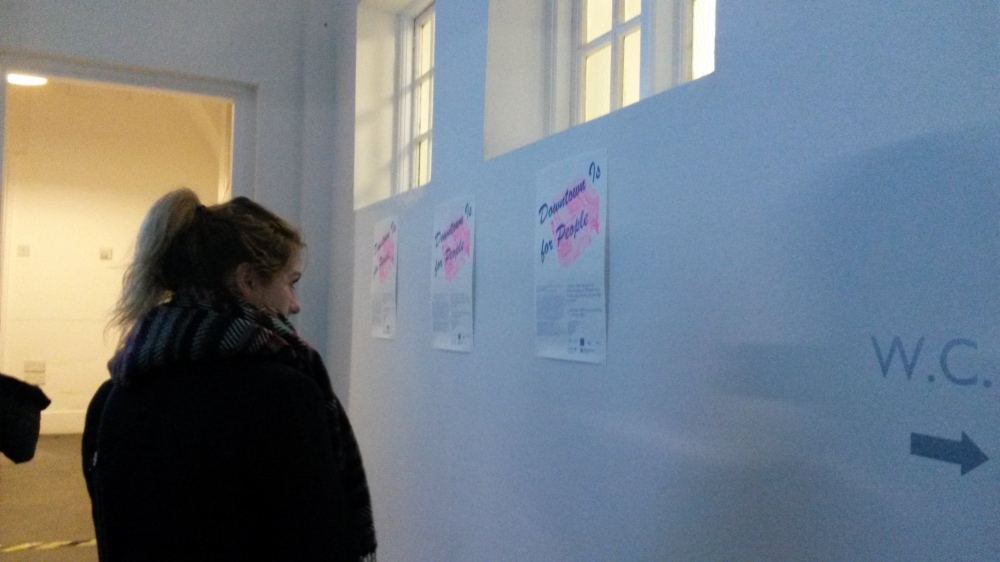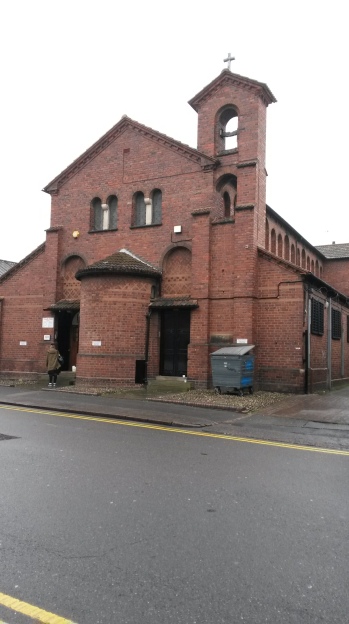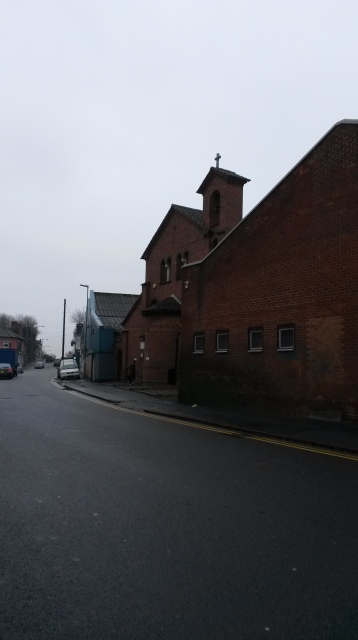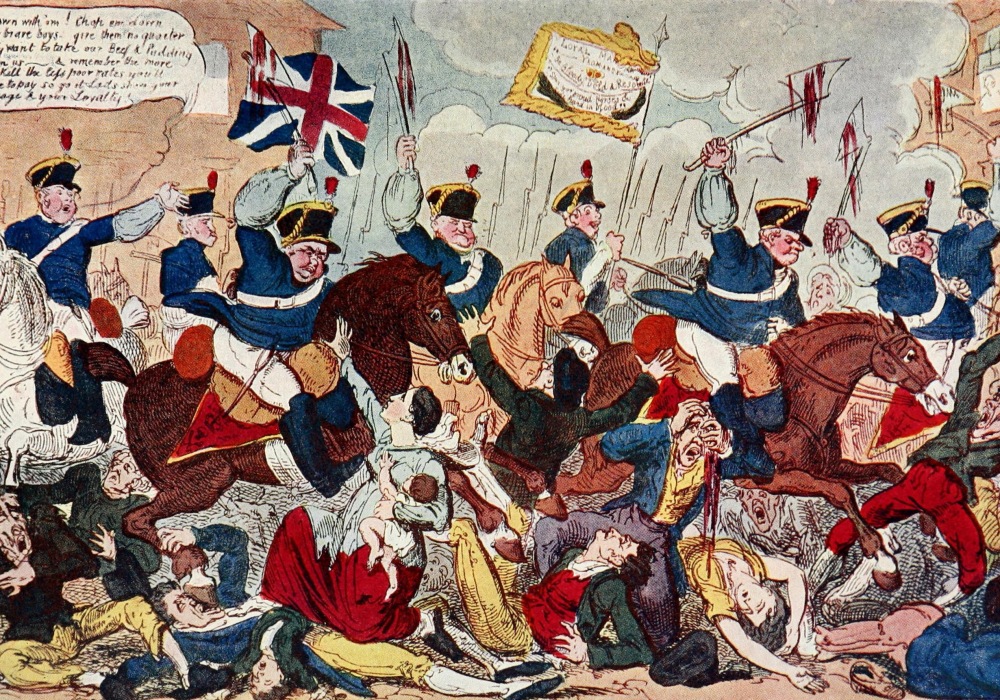Can Universities Change the World? A History of 20th Century British Student Life and Political Activism
Paper given at the University of Birmingham Politics Discussion group on the evening of 14/10/19
The University of the Factory Owners
To begin thinking about whether universities can, or can’t change the world, it is important to recognise why universities emerged in capitalist societies and the role that they have played and continue to play in sustaining and reproducing the current system of social relations.
The quickest glance at the University of Birmingham’s website will tell you that the university was founded in 1900. But why was it that a university came into being in Birmingham at the dawn of the 20th Century?
An answer to this question can be found in exploring the economic structure and political economy of the city prior to the First World War. In Victorian times Birmingham was dominated as it had been since the middle ages by the interests of hundreds if not thousands of small scale manufacturers. Buying the labour of at most a handful of workers, these small scale capitalists, who made specialist products from metal such as cutlery, firearms and jewellery, were primarily concerned with keeping down taxes on their profits and keeping state regulation out of their workshops, which were often literally part of their houses.
As the 19th Century progressed, however; a small class of major manufacturers who had access to the capital necessary to build huge factories requiring the labour of thousands of workers emerged. The demands of this small group of incredibly wealthy often intermarried families of major capitalists differed from those of the older class of small workshop owners. In contrast to the thousands of small businessmen who had previously been dominant in Birmingham, these new kinds of owners, families such as the Kenrick’s, the Chamberlain’s, the Guests, the Keens, the Nettlefolds, and the Cadbury’s, actively lobbied for certain forms of state provision of services.
For instance: the older groups of workshop owners, when they had to buy the labour of people outside their families, favoured taking on young children from the streets around their homes and teaching them very specific sets of trade related skills. Whereas the new owners of the large factories preferred paying a little bit more in taxes to provide children with elementary education and then buying their labour as general semi-skilled workers, to undertake a range of tasks in their production processes, because at scale this was a far cheaper way for them to get a productive workforce.
Other examples include the creation of publicly owned water and gas companies because the major owners realised that it was cheaper for them if the gas and the water needed for their vast factories was provided by single City Council owned firms as opposed to a raft of competing private entities. In a similar vein they supported the Council’s work to construct a tram network as it meant that workers could be housed on the edge of the city, where land was cheaper and brought to their workplaces, enabling wages to be lower. As it happens many of those houses were rented from a notorious landlord and speculative builder called Henry Barber, a charitable trust in whose name, provides the university with a grant currently worth over £2million a year which covers the operating costs of the Barber Institute and funds a number of academic posts in the Art History, Music and Philosophy Departments.
This is the political economy out of which the University of Birmingham emerged. In many ways the university’s foundation was part of a nation wide, or indeed international phenomenon, given that universities were founded in Bristol, Manchester, Liverpool, Sheffield, Belfast and Leeds within a decade of the University of Birmingham being established. As early as 1903 national government began providing grants to support research and teaching in the newly founded universities, however, the impetus and initial funding needed to establish a university had to come from the economic and political elites in a city or region.
These elite interests were clear that the purpose of these new universities was to sustain and reproduce the economic system upon which their interests rested. The focus at the new University of Birmingham was upon science, engineering and business studies. When it first opened in 1910 the Edgbaston campus was entirely focused upon teaching and research in science and engineering. A Business School, the first in the UK, was set-up in 1907 to conduct teaching and research in the then brand new fields of management and administration science, the idea being to train managers and administrators for Birmingham and the West Midlands’ industries.
Old Joe Must Fall
Which is not to say that the university during this early period was solely focused upon Birmingham and its surrounding region, far from it. The major industrialists who had lobbied for and funded the creation of the university were deeply embroiled in the workings of the UK’s colonial expansion, which reached its zenith in the first third of the Twentieth Century. Joseph Chamberlain, the University’s first Chancellor, who is commemorated in an immensely visible way; by the Old Joe Clock Tower, was the Colonial Secretary in the Conservative governments between 1895 and 1905. Even by the standards of the Tory Party just over a century ago, Joe Chamberlain was considered a zealous imperialist and something of a national chauvinist, highly entangled with and supportive of figures like Cecil Rhodes. That is the Cecil Rhodes whose ongoing influence upon higher education around the world through the trusts and foundations he established, has recently been challenged by students of colour and decolonising activists through the Rhodes Must Fall Campaign.
Just as insidious was the way in which the hydrocarbon industry was woven into the fabric of the university from its very beginning. A School of Mining was established at Edgbaston in 1905 complete with a functioning model coal mine, which was located near where the Sports Centre now is. In 1908 following the discovery of oil in what’s now Iran, the School of Mining branched out into serving the oil industry as well, with model oil derricks being erected on what’s now the playing fields by the Bristol Road. Engineers and chemists from the newly formed Anglo-Iranian Oil Company then worked with the university to refine the emerging science of petrochemistry, beginning a connection between that company and the university which continues to this day. Following the nationalisation of the Iranian oil industry in 1951 by the government of Mohammed Mossadeq, the Anglo-Iranian Oil Company renamed itself British Petroleum and more recently BP.
What this history of the early days of the university shows, is that from the start; the institution has been deeply enmeshed in the reproduction of the existing system of social relations. I am sure that everybody here can think of examples from the contemporary life of the university, and their experiences as members of its community, which replicate the university’s early grounding in the maintenance and reproduction of capitalist, colonial and fossil fuel based power.
These fundamentals are essential to understanding the education that the university offers those who study here, and those who come into contact with its wider educational and research mission. This can only raise vital questions for members of the university community who seek to challenge aspects-or the entirely-of the current system of social relations. Essentially, given that students and other activists at the university are part of an institution which has a key ideological and functional role to play in sustaining capitalism; how can they seek to challenge the conditions around them and change the world?
Scab Students?
There are at least partial answers which can be gleaned through looking historically at student life at the university. For most of the first 70 years of the existence of the University of Birmingham, as a historian when looking in the archive for the history of student activism, you end up asking yourself: what activism? Looking through the archives of Redbrick and other publications produced by students for students, politics for students between the foundation of the University and the 1960s, if it took place in any overt form, was highly conventional. There are references to debating at the Guild of Students, to campus branches of the Conservative, Liberal, Labour and Communist Parties, but not to anything that could be considered direct action and campaigning. It is all very refined and restrained, though essentially not that different from middle class forms of political expression that prevailed throughout British society in the first two thirds of the 20th Century.
To understand why this was the case, it is important to understand what the student body at the University of Birmingham was like prior to the late 1960s. For a start compared to today it was absolutely tiny. Today the university has 35,000 students and at least 8,000 staff. Prior to the Second World War the university had 2,000 students and several hundred staff, if that. Even in the early 1960s-after nearly 20 years of steady expansion following the 2nd World War-the number of students was still just over 3,000.
It was also an incredibly male student body. In 1961, 75% of the student population of the University of Birmingham were men. This was comparable to the situation in the 1920s and 1930s when there were pretty much no women students at the university who were not being paid for too be there by government teacher training grants. The male students as well were usually at university for very instrumental reasons studying technical and scientific subjects with a view to getting technical and administrative jobs in industry and state apparatus. These conditions, plus the solidly middle middle and upper middle class milieus that these students were drawn from, meant that they tended to have Conservative leanings.
Until the late 1950s when the government began to put a substantial amount of money into providing grants to students, the overwhelming majority of Birmingham students were drawn from a thirty mile radius of the university’s campuses. They also tended to live at home whilst they were studying, reducing the opportunities available for them to encounter influences, including things as simple as living with or meeting up outside of university hours with fellow students, outside the social sphere that they came from.
Indeed prior to the upsurge in student activism that took place in the late 1960s and 1970s the popular image of students was that they were either apolitical or an actively Conservative force in society. The historian of left activism in the 1960s and 1970s Cecilia Hughes has interviewed student activists from working class backgrounds who came from trade union, Labour or Commnist voting backgrounds. A number of her interviewees recall their families being concerned about them going away, in part because their popular image of what students were like, was conditioned by memories of students from universities like Birmingham volunteering to drive lorries, buses and trams and to work in key industries like electricity generation, so as to break the 1926 General Strike. Indeed, in the form of alumni Stanley Baldwin and Neville Chamberlain the University of Birmingham, provided the Conservative Prime Ministers who governed the UK for the overwhelming majority of the period between the end of the First World War and the start of the Second World War. A vivid illustration of how university education during this period served to reinforce and reproduce conservative outlooks.
So, given that there was an outbreak of student militancy in the late 1960s, which continued with varying degrees of intensity throughout the 1970s and indeed beyond, what changed?
The University is a Factory
Two key moments and movements worth honing in on are the Campaign for Nuclear Disarmament, which was founded in 1958, and the anti-Aparthied movement which also got going in the late 1950s. Both the CND and the anti-Aparthied movements were far more confrontational than previous predominantly middle class movements. They also had a strong appeal to students, not least because of the ways in which universities across the world were enmeshed in the military industrial complex, and the fact that British universities often had close ties to southern Africa, which made British students feel complicit in the racist regimes which governed South Africa and Rhodesia.
The University of Birmingham in particular had longstanding ties to the white nationalist governments in Pretoria and Salisbury. The government of Rhodesia based in Salisbury had established a university college in the 1950s which ran university level courses but could not award its own degrees. Birmingham offered to award degrees to University College Salisbury students, which prompted protests by Birmingham students which continued fairly consistently from the early 1960s until 1980 when the segregationist government fell and black majority rule was implemented in the newly renamed Zimbabwe. University College Salisbury was a segregated institution, to protest this, from 1962 onwards University of Birmingham students, through the Guild, raised several thousand pounds each year to pay for a black Rhodesian student to travel to Birmingham to study. This was the most prominent part of a wider campaign against the racist colonial regimes in southern Africa, which included boycotts of firms which did business in the region and protests against politicians and others, who supported the South African and Rhodesian governments when they visited campus.
These single issue campaigns injected a new tenor, more open to challenging authority, into what had previously been a quiet and conservative campus milieu. However, as is always the case, it was changing material conditions and new social forms which led to the emergence of student radicalism and militancy at Birmingham and other universities.
In the late 1950s it was decided by the government, following lobbying for industry who like their early 20th Century forebearers required more highly skilled workers and did not want to have to pay to train them, themselves; that there would be a major expansion in student numbers. Ever since the Second World War, the number of students had slowly been increasing, so that by 1960 around 3% of school leavers went to university. Twenty years previously only around 1% had done so. At the same time the amount of money that the government spent each year on maintenance and tuition grants for students also increased meaning that a larger proportion of the student body was being paid to go to university and they did not have to pay fees.
In 1961 a Conservative government extended this provision even further, effectively abolishing tuition fees and setting a standard grant rate of around three and a half pounds a week for students living away from home. This was more money than the majority of manual workers were paid each week, so whilst not exuberant, was more than enough for a single young person to live on, away from home. Then in 1963 the Robbins Report revamped the government’s entire university policy, stipulating that “universities should be open to all those qualified and able to attend who wish to do so”, and just as strikingly; that the government shouldn’t try and control what people wanted to study. This meant that universities were allowed to run any course they wanted that they could get students to study.
The effect of these new policies was almost instant. The percentage of school leavers attending university tripled from 3% to 9% within six years. Some of these new students were accommodated in new universities such as Warwick, Sussex and York, but the majority took up places at established universities like Birmingham. At Birmingham by 1970 the student body numbered over 9,000 an increase from around 3,000 just ten years earlier.
Material Issues, Concrete Calls for Action
As was inevitable, despite possibly the most generous government funding settlement for British universities ever, this sudden rapid growth led to immense teething problems. Campuses were rapidly expanded with new halls of residence, teaching blocks and facilities hastily being thrown up to meet government targets. Quite often these new buildings were poorly designed and constructed as they’d been commissioned to tight budgets. Often there were hold-ups and delays in their completion. The Muirhead Tower, which like most of the University of Birmingham’s teaching space, dates from this era, is a case in point having been begun in 1965 it wasn’t finished until 1971, and even then was plagued by serious structural faults for decades after it was finished.
It was to a campus very much under construction that the students who took part in the 1968 Occupation of the Great Hall arrived in the mid-1960s. If you read through back copies of Redbrick and other student publications from the period, and listen to the memories and reflections of people who were students at this time, many of the complaints seem strikingly like ones that people might have today. About a lack of social space, about half finished buildings, about support services not keeping up with the volume and pace of university expansion.
Accomodation was an especially pressing concern for students arriving at Birmingham. The number of students arriving from across the country to study at the university overwhelmed the university’s underesourced programme to construct new halls of residence. This meant that students had to look for flats and rooms in the private sector at a time when there was a severe shortage of private accommodation to rent in Birmingham, which put upwards pressure on prices and meant that some students ended up living in incredibly poor accommodation. At this time, whilst the student body was rapidly growing, it was a fraction of the size that it is citywide today, so there was nobody other than universities building or renting accommodation specifically to students.
To my mind it is these conditions and the discontents they bred which led to the upsurge in student militancy in the late 1960s. It is often forgotten that in France in 1968 the first student occupation broke out after the dismissive and patronising response a student at Paris VIII University received from the visiting Education Minister, when he complained during a Q&A about the lack of social space in his accomodation block. These material conditions and the quality of life that people are able to enjoy matter. And judging by the way they are juxtaposed in the publications of the time it is clear that a poor housing situation, poor facilities and a half finished campus, formed a key backdrop to the student protests which erupted at Birmingham in 1968.
Which is not to overlook the role of wider cultural and political change in creating the conditions which led to the protest and the occupation. Key amongst these are the fact that an increasingly large proportion of students at the university were studying social science and humanities disciplines, as opposed to the technical and scientific subjects, which earlier generations of students had overwhelmingly studied. These disciplines gave students the skills and ability to understand and critique the conditions that they found themselves in.
Likewise, because the humanities and social sciences were expanding so rapidly during this period, an unusually large number of the staff teaching students were themselves young. They were freshly minted PhD graduates in their 20s and 30s. As such they were keen to use new approaches and literature in their teaching. The Soviet invasion of Hungary in 1956 led to a large number of members of the Communist Party of Great Britain resigning in protest, and in doing so; set the seeds for a flourishing of Marxist and critical thought in Britain and elsewhere that perhaps has only been mirrored by the current phase that we’re going through. This new left included the historian E.P. Thompson and the literature critic Raymond Williams who contributed to a revolution in the study and teaching of History and English respectively. It also included younger figures like the sociologist and critic Stuart Hall, who was involved in founding the New Left Review, and who began teaching at Birmingham in 1964, in the newly founded Centre for Contemporary Cultural Studies.
Students exposed to these worldviews also had access to newly translated and published Marxist classics, as well as the growing body of structuralist theory that was emerging in Europe. These books produced in cheap editions readily affordable to students on fairly generous grants were the fuel that underpinned students’ growing critique of the world around them.
Farenheit 27/11
The lightning rod for the protest movement at Birmingham in 1968 and the subsequent occupation of the Great Hall which ran from the 27th November until the 4th December, was the lack of say that students had in the governance structure of the university. Students wanted more direct input into every aspect of their lives as students: from the decisions of the university’s accommodation and catering committees, to the university’s strategic direction, to matters like assessment and what the university syllabus was like.
In 1968 the age of majority was still 21, it was only lowered to 18 in 1969, which meant that like a school, the university argued that it was acting “in place of parents” for the majority of the undergraduate population. For the university this meant it was entirely reasonable that students should not be allowed a say in the running of the university. At this time, after all, most of the academic staff at the university also did not have a say in how the institution was governed. Operational decisions were made by the University Council, which then as now, comprised mostly business people representing capitalist interests within the university. Academic decisions were made the Senate which was comprised almost entirely of the professors who ran each department, with only minimal representation for staff who were not professors. Within the university’s faculties and departments, again, decisions were pretty much solely made by professors. This meant that a lot of the more junior academics, who as we’ve were often not all that much older than the students they were teaching, also felt cut-out of decision making.
In February 1968 in a climate of general student and junior staff resentment and dissent a document produced by the Guild of Students called “The Student Role” began to circulate. This publication called upon the university to completely overhaul its governance structures and allow students and staff opportunities to shape the policies and direction of the institution. The University’s governing Council received the report when it was sent copies by the Guild, however, they refused to meet with the students’ union and its leadership and to publish the minutes of their internal discussions about the document.
Come the autumn term the Guild of Students and the Redbrick paper both began campaigning harder for the university to adopt its recommendations. It was clear that some kind of reckoning was on its way. The environment on campus was further charged by the fact that the university’s long serving Vice Chancellor Robert Aitken had retired over the summer. His replacement Robert Hunter had no previous experience at Birmingham and therefore no real feel for what the issues at the university were. He resolved however, that he was not going to introduce any reforms to student representation.
As the autumn term of the 1968-69 academic year continued, the Guild of Students found that its attempts to negotiate what the university were not going anywhere, and neither would the university publish a response to The Student Role. In the face of this intransigence-Ray Phillips the Guild’s politically middle of the road President-began threatening direct action. At a general meeting on the 30th October a day of protests on campus against the University Council and Vice Chancellor Robert Hunter was planned for the 27th November, with an ongoing programme of direct action after that, if the students’ demands were not met.
This day of action culminated in a full general meeting on the Guild of Students, where more radical members of the student body organised as the “Ad-Hoc Group for University Reform” managed to pass a motion calling for an occupation. The occupation began that evening with a group of student protesters taking over the Great Hall, Vice Chancellor’s Office, Council Chamber and the Finance Office in the Aston Webb Building. Activists also attempted to take over the University’s switchboards and post room, which would have severely limited the ability of the University’s managers to communicate with the outside world, however; they were denied access by a small group of university telecoms workers who were later lauded in the right-wing tabloid press for seeing off the threat from these supposed revolutionaries.
The University’s response to the occupation was extreme, senior academic managers and members of the University Council clearly did not know what had hit them. Robin Hunter recorded a televised address which was shown on screens across campus through the university’s recently installed closed circuit television system. In it he pleaded for the restoration of order and threatened terrible consequences for the organisers and participants in the occupation.
Inside the occupation the activists who were sleeping on the floors of the spaces that they’d captured organised themselves. Ray Phillips has recalled he was concerned that the University’s administration and their security guards would attempt to enter the occupation and lock-out/evict the occupiers. To avoid such a countermove the Guild organised elections to a ten member occupation committee who were responsible for security in the occupation. This was both to ensure that the University could not entire the spaces that had been occupied and also to try and avoid occupiers causing damage or making a mess that the university could later blame upon the Guild.
This standoff continued for the rest of the week with the end of term looming. On the 4th December it was decided that another Guild general meeting would be held to see whether the student body wanted to continue the sit-in. The meeting was held the next day, with roughly 5,000 people, over half the student body in attendance. It was resolved that the occupation would be ended. The students had not achieved their goals, however; they threatened further action down the line if the university continued to be intransient and also stated that they expected the following four principals be respected:
‘no victimisation, all university committees to meet in public, the right of students to a say in university government and a commission to examine the role and structure of the University’.
In assessing the outcome of the occupation in 1968 it is worth pointing out that compared to actions which took place internationally in the United States, France and Mexico, or even at other UK institutions such as Liverpool, LSE and Essex, the Aston Webb occupation in November and December of that year was relatively low-key. After all it only lasted for a week and was conducted in a relatively orderly manner. Unlike other occupations during the period 1967-69 such as Essex, Leeds, LSE-and the Warwick occupation-which took place a bit later in 1970, there was relatively little media coverage outside the West Midlands region, and even less which seriously engaged with the students’ concerns.
Longer term, the demands that the Guild had put to the university, were partially fulfilled. Today Guild sabbatical officers sit on major university committees like the Council and the Senate and students have the right to elect a number of representatives to sit on the Senate. Likewise, the course rep system, which encompasses all departments and levels of study, also dates from this time. There was also a review of university governance, which dragged on throughout the early 1970s, eventually reporting in 1975, which led to some small improvements in junior staff representation at the university, as well the changes to student involvement in university affairs outlined above.
In a similar vein the students’ demands for non-victimisation also went unheeded. Dick Atkinson a Teaching Fellow in the Sociology Department, who had been a student leader whilst a postgraduate student at LSE, was informed at the end of the 1968-69 academic year that his contract would not be renewed. This was unusual at the time, because once hired academic staff very rarely, were not offered permanent positions after a couple of years teaching at universities. His removal from the staff was widely perceived to be retaliation for the fact that he was perceived as being close to the students involved in the protests and had co-ordinated a group of junior staff who had made similar demands. Dick Atkinson became something of a cause celebre, unsuccessfully suing the university for unfair termination of contract. The Guild of Students’ in solidarity resolved to pay his salary for the 1969-70 academic year and allowed him to use their premises to teach any courses that he wanted.
He was not the only staff member to feel the chill because of his actions during the occupation. Richard Hoggart the University’s Professor of Cultural Studies, and Head of the Centre for Contemporary Cultural Studies, was perceived as not entirely sympathetic to the student activist’s demands, but also not unsympathetic either. This made his position at the university tricky and he took an extended sabbatical from the summer of 1969 to go to New York and be the CEO of UNESCO. He never returned to the University of Birmingham, moving to Goldsmith’s College instead. His deputy at Birmingham Stuart Hall moved into the Centre’s Directorship and led it throughout the 1970s, the period of time when much of its most groundbreaking and still cited work was produced.
This messy conclusion to the occupation and the very partial and incomplete way that the students’ demands were met, I think, actually overlooks a lot of key aspects of what the 1968 occupation, and other events like it in the late 1960s and early 1970s signified.
Students as an Interest Group in pre-Neo Liberal Society
After three years of fairly constant student direct action on British campuses it is fair to say that the old view of students as conservative, or apolitical had been completely chucked out the window in the eyes of the public. Students now were perceived, probably not always entirely accurately as the majority were never like this, as a radical and even destabilising force in society. Some of this was thanks to the emergence of “students” as a distinctive “class” with shared interests in society. Students during the 1960s, 1970s and into the 1980s had a collective interest in the maintenance of free university education and in defending the real terms value of the grants they received from the government.
Defending these things in an environment of high inflation when university funding was increasingly constricted, meant that there was a major wave of occupations and other protests, in defence of student grants and free education pretty much every year during the 1970s. This meant that students, despite still overwhelmingly being drawn from the middle class, had commonalities of interest with groups like benefit claimants, older people, council housing tenants and trade unionists. All of these groups from the late 1960s into the 1980s were highly organised and assertive when it came to pressing their claims for an increased share of society’s wealth and better goods and services. Students during this period were acting no differently.
What did this mean in practice? As we have seen students at Birmingham prior to the late 1960s did not generally involve themselves with overt politics and campaigning. In the two decades that followed this altered drastically. I mentioned earlier about the problems students in Birmingham during this period had with accessing good housing and accommodation. From around 1969 onwards this manifested itself in students showing solidarity with housing campaigners living in run down parts of the city like Balsall Heath. Tenants living in dilapidated Victorian properties in Balsall Heath were campaigning for their homes to be demolished and to be rehoused in new council built properties at cheaper rents. To this end they organised themselves and went on rent strike withholding payment from their landlords.
A large number of Birmingham students involved themselves in the tenants’ campaign which ran from 1969 to 1970 when it successfully concluded. In this way, following their own experience of campaigning and taking direct action in 1968, Birmingham students were showing solidarity with some of the city’s poorest residents engaged in a struggle of their own. This illustrates that when it came to access to services and social issues like housing students and non-students had a clear commonality of interest and organised and campaigned together.
At the same time students and recent graduates from the University of Birmingham were involved in setting up the Birmingham Claimants Union. This was one of the first organisations of its kind in the UK and worked to organise benefit claimants, of all kinds, so as to support them to secure the maximum amount of money possible from the benefits office. Later in the 1970s student activists also worked with community activists in areas like Selly Oak to squat abandoned buildings. Some of these squats were occupied by families and others in need of re-homing, or better housing, whereas others became occupied community centres. Some of these like the Selly Oak People’s Centre, which stood next to what’s now Big John’s takeaway, lasted for years. The People’s Centre was in use from 1975 until 1982 and was used for all sorts of purposes including women’s liberation meetings, legal advice clinics, and Rock Against Racism gigs.
What is especially striking looking back on the period from today is that lots of these activities had formal institutional backing from the Guild of Students’. The Guild of Students’ volunteering department, then called Student Community Action, was heavily involved in all manner of community campaigns. Indeed typical Guild publications from the 1970s will include adverts for volunteers to run swimming lessons for disabled people, join a befriending scheme for elderly people and run a reading group for mental health inpatients, alongside adverts for volunteers to support the People’s Centre, run welfare rights stalls and take part in housing related activism. Essentially at the time no distinction was being made between social service volunteering and more radical forms of activism. Guild officials, Guild spaces and Guild money was being used equally to support both.
To conclude this paper, and move into a discussion, I will suggest a few key things which I think have changed over the last forty years at the University of Birmingham, in the UK and in the world more generally. These are things which have made the kinds of activism I have just described harder:
- Less reason for students to express solidarity with other groups in society
-Changes to student finance mean grants aren’t there any more. So no longer a focus for student activism via the NUS etc. to try and get a good settlement each year
-Social democratic state has been hacked back, fewer groups in society have clear stakes in the welfare system, those which do are marginalised.
-Students despite getting loans are a group who have lost out and no longer see themselves as having solidarity with other groups that get government money - Student unions are far more controlled and regulated
-Now have to be charities which really limits their ability to be political
-Professional managers and other workers who have careers and don’t want to rock the boat
-Less open and transparent democratic structures - *Students are now more spatially separated from wider society
-I.e. Many are now in Selly Oak living amongst other students. Until the 1990s when student landlords became a thing this wasn’t the case. Students were scattered across Harbourne, Mosely, Kings’ Heath, Balsall Heath and other areas. This meant that they came more readily into contact with non-students and shared their problems and concerns
-Conversely there’s more students living at home. I read the other day that 20% of full-time students now live with their parents. This means like students before the 1960s they’re cut-off from their peers and have less chance to mix with them and share now ideas and approaches to things. - *More pressure upon students
-To do certain things to get certain kinds of “good jobs” post-graduation
-More pressure to study, demands of part-time work, commuting etc.
-To conform generally and not rock the boat
-Affects things like mental health - *More diverse student body
-No longer overwhelmingly young (late teens early 20s), middle class, white British etc.
-More postgrads, older students etc studying part-time etc.
-More ethnically diverse student body, more international students, the majority of students now women
-Diversity of institutions as well
Further Reading (and Watching)
Jenny Wickham’s reflections for Redbrick on her involvement in the 1968 Occupation of the Great Hall
Helen Fisher, University of Birmingham Archivist, on the Cadbury Research Library’s holdings relating to the event of 1968 on the university campus. From Old Joe magazine.

Birmingham 1968, by Flatpack Projects
N.B. Flatpack have a book launch event at the IKON Gallery on Tuesday 10th December 2019. It’ll feature talks, and the chance to meet a number of people who were involved in events in Birmingham during the period.
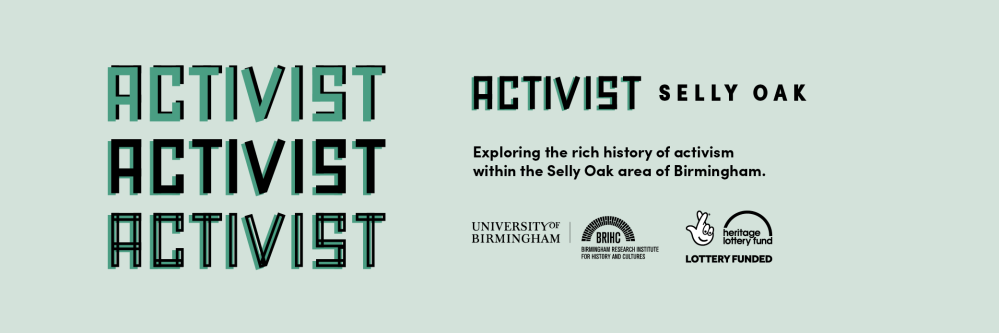
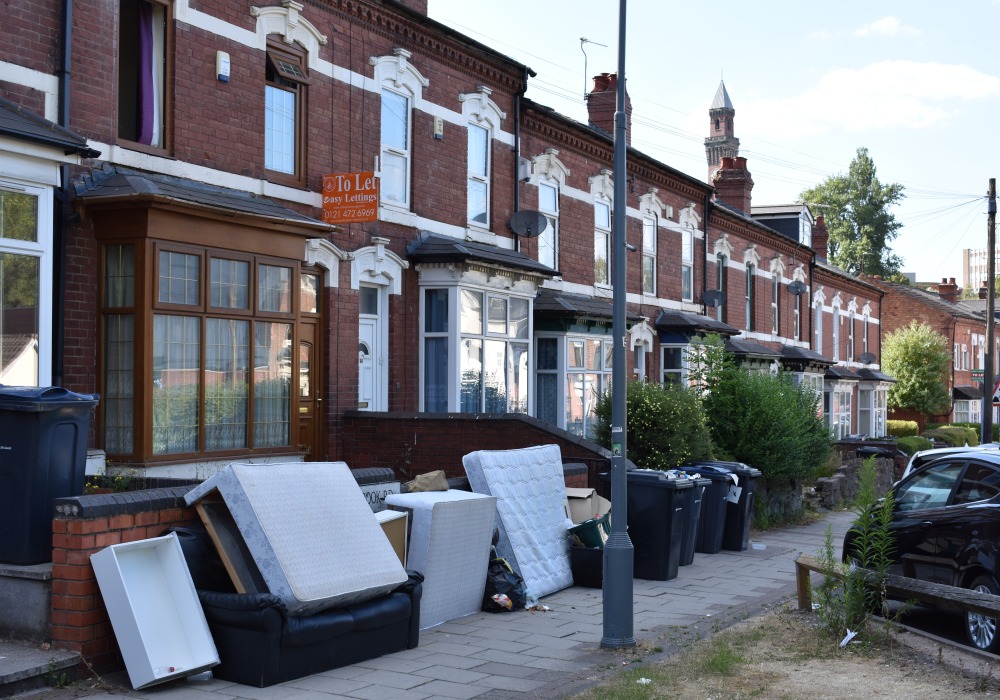
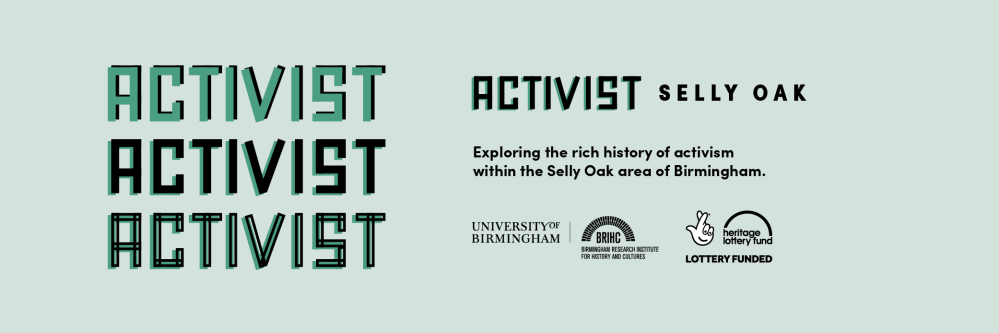
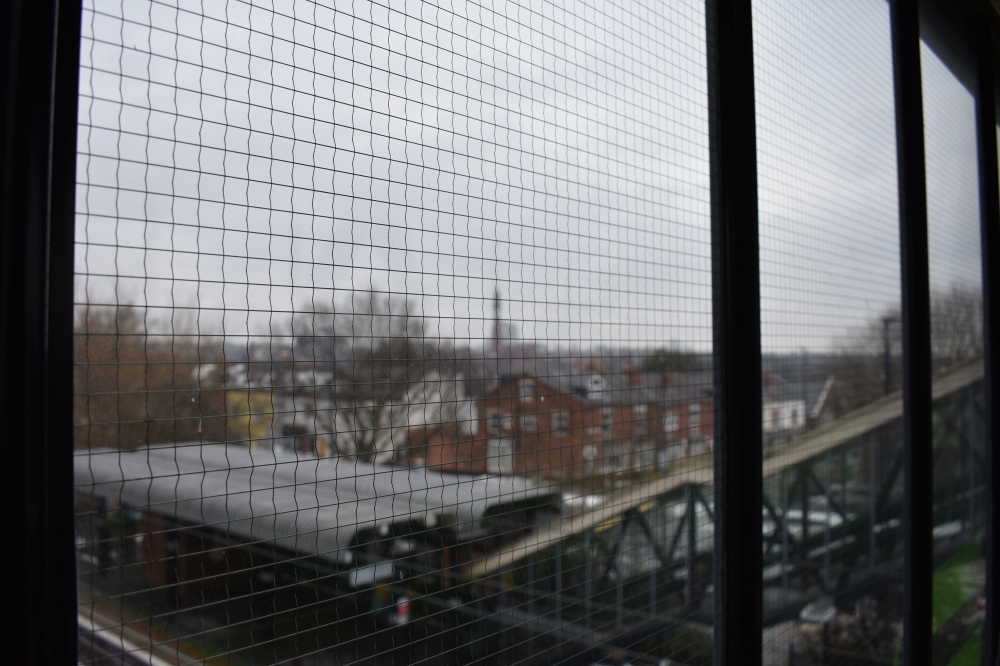
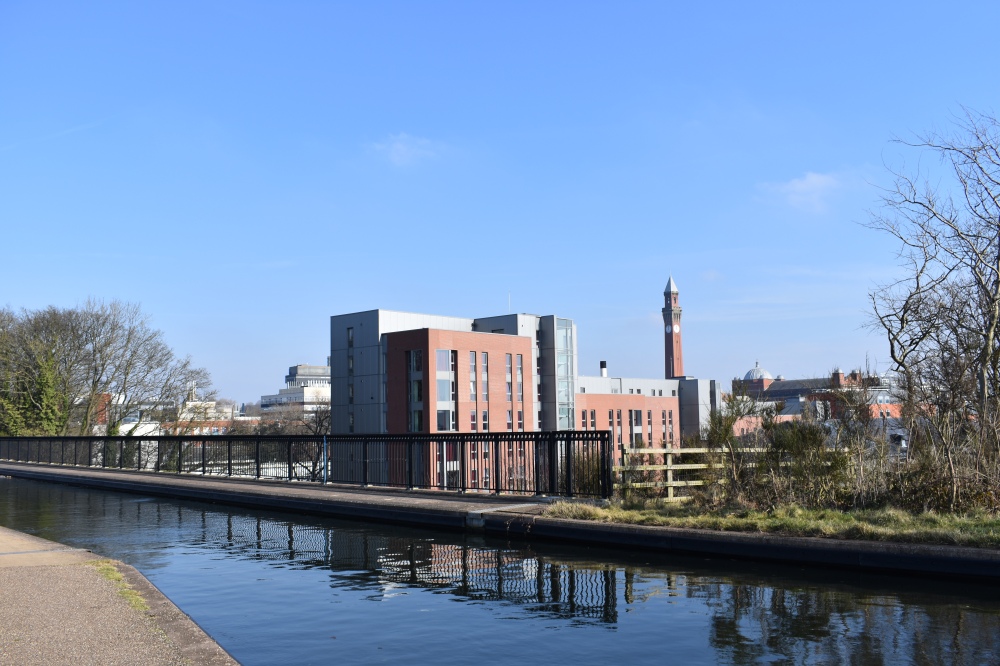

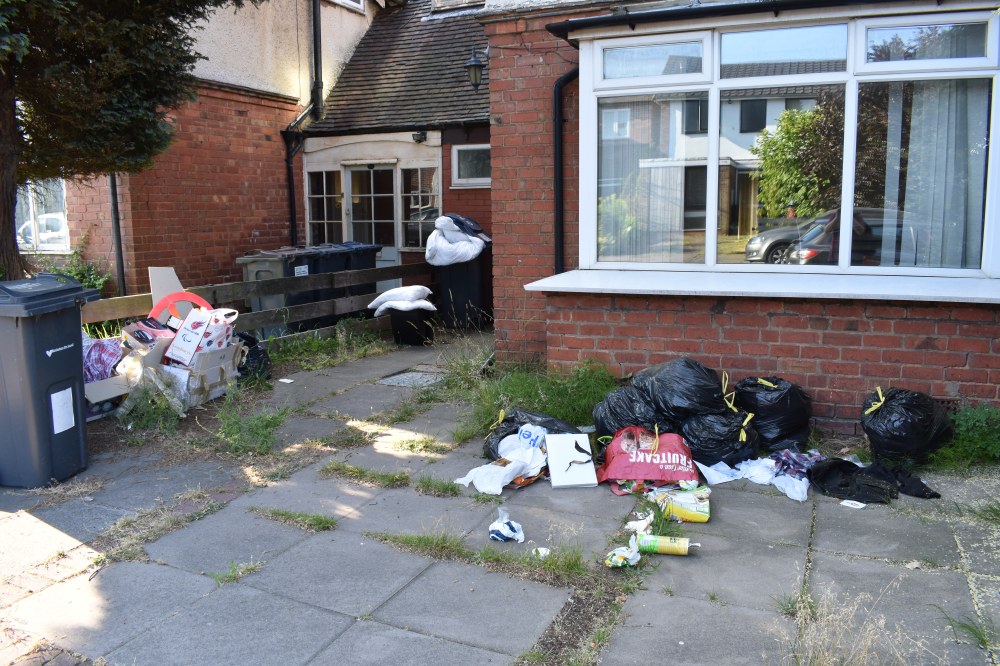
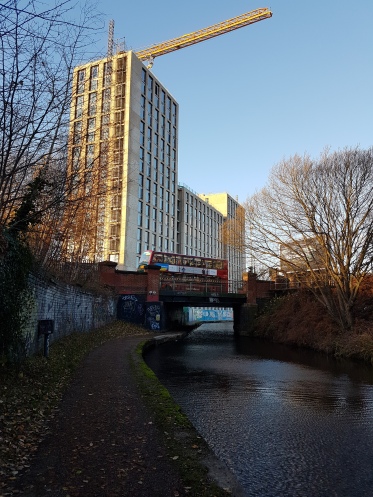
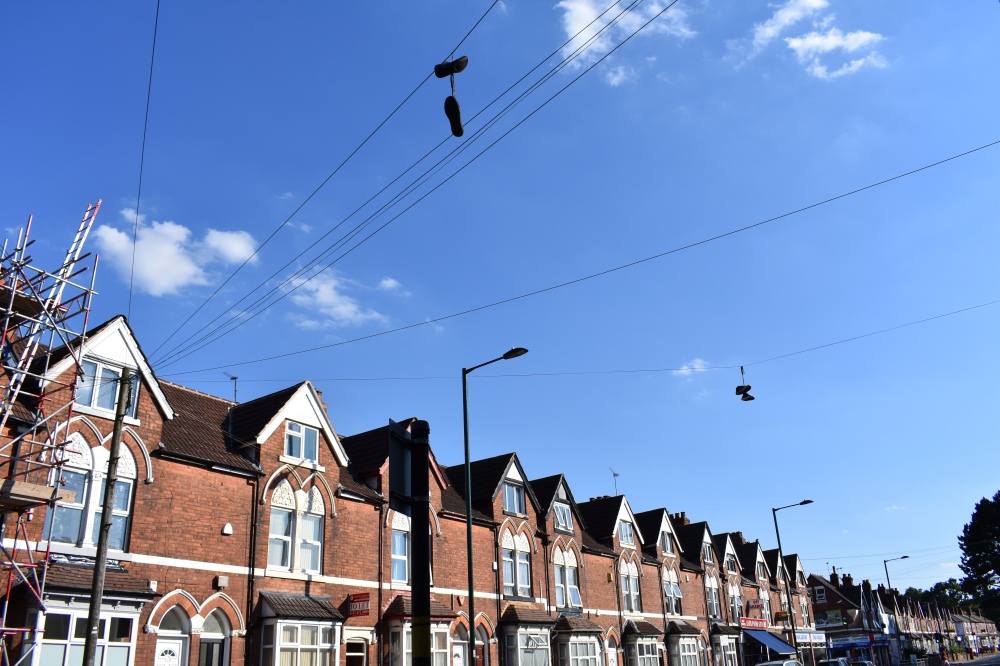
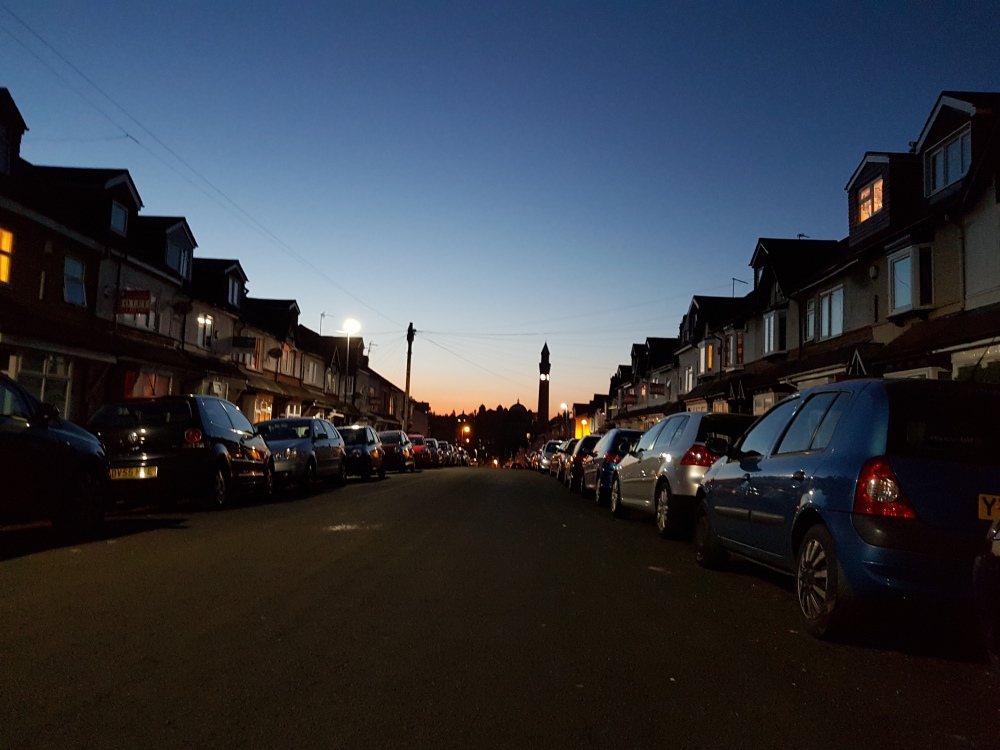
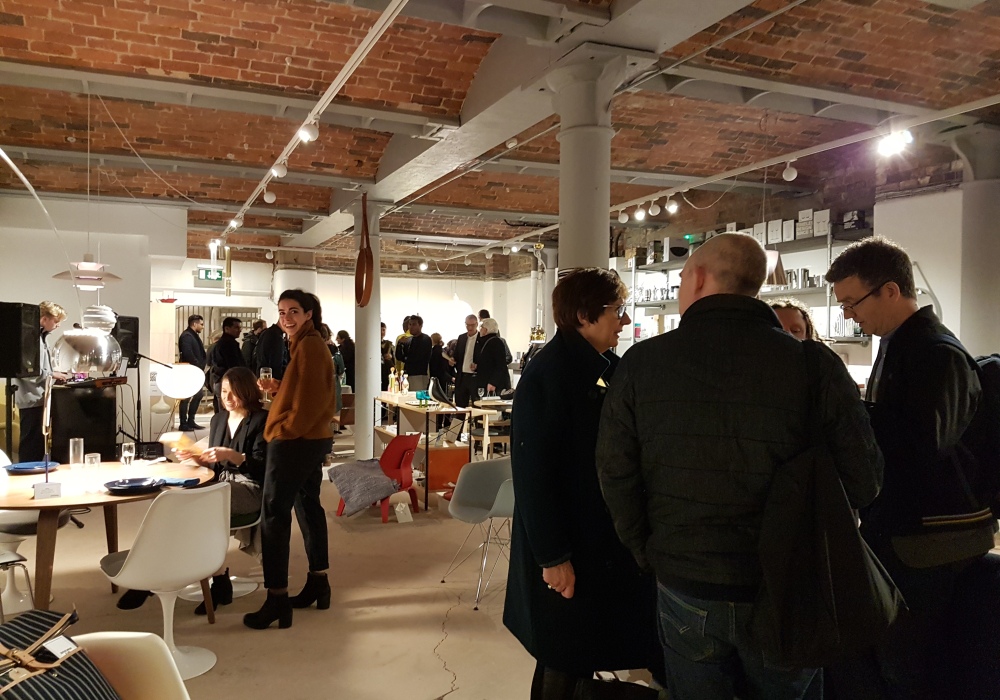
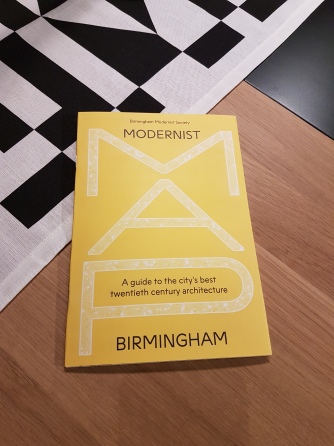
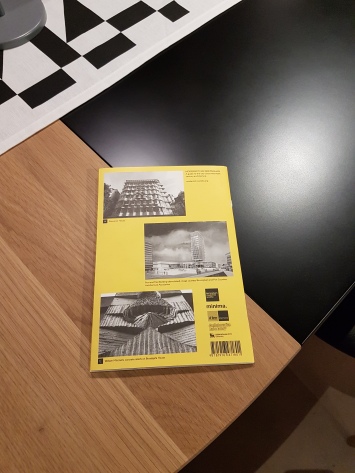
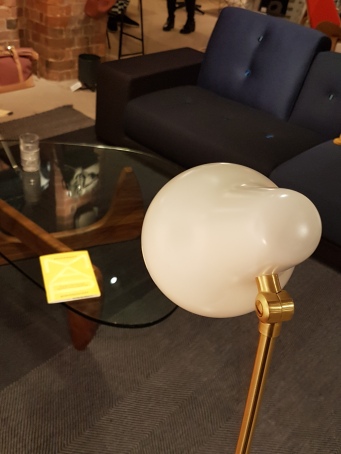
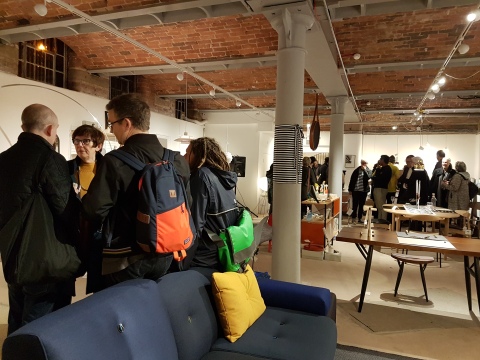
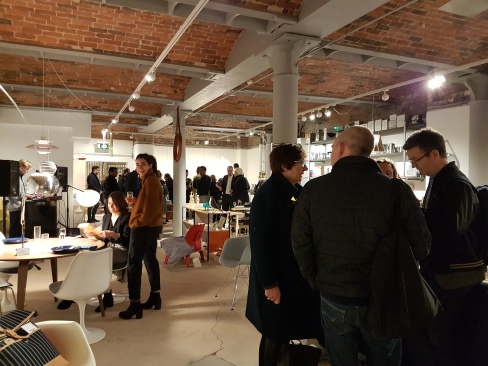
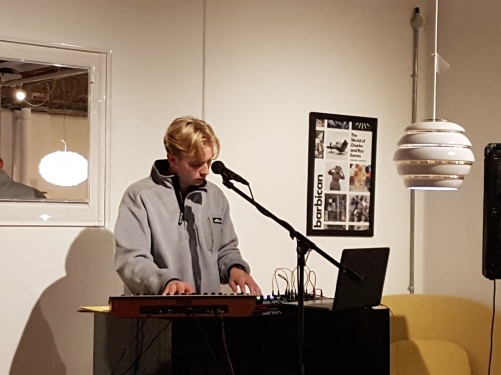
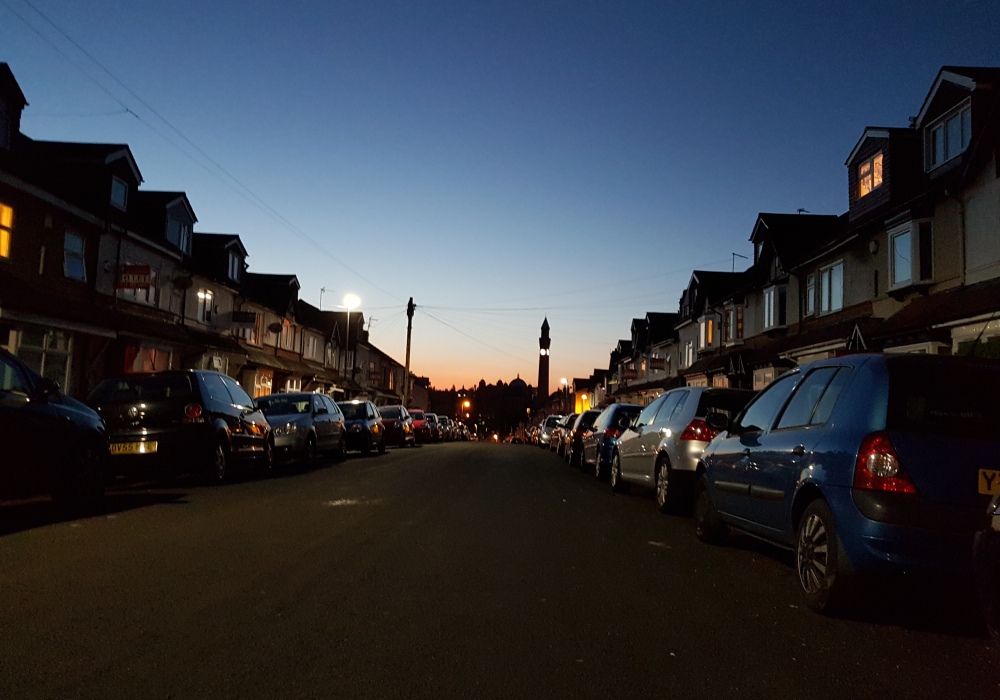
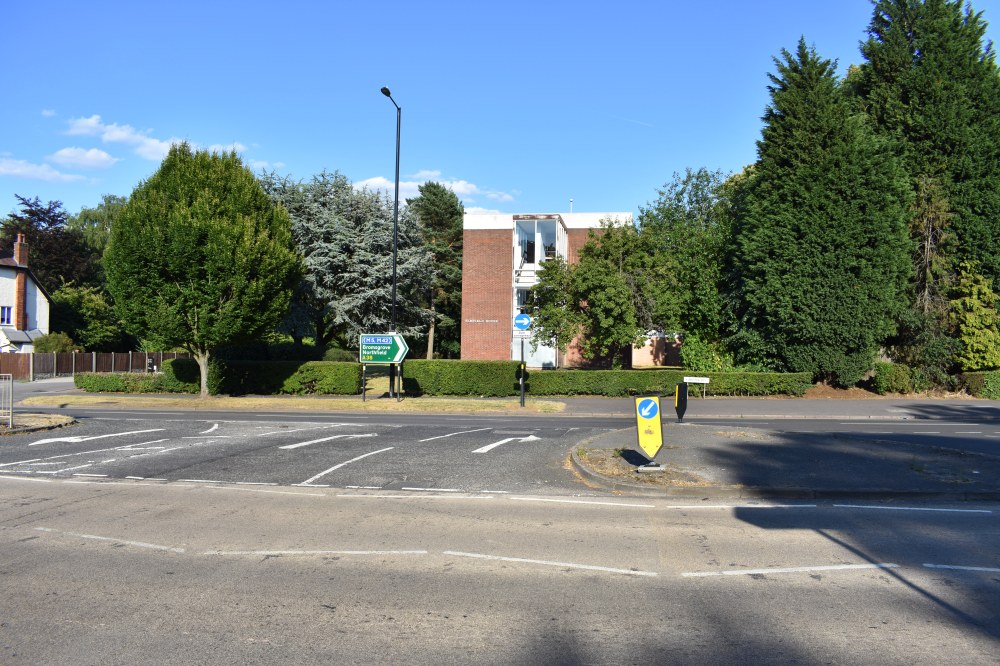
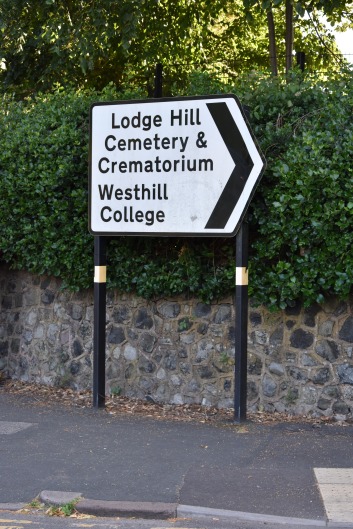
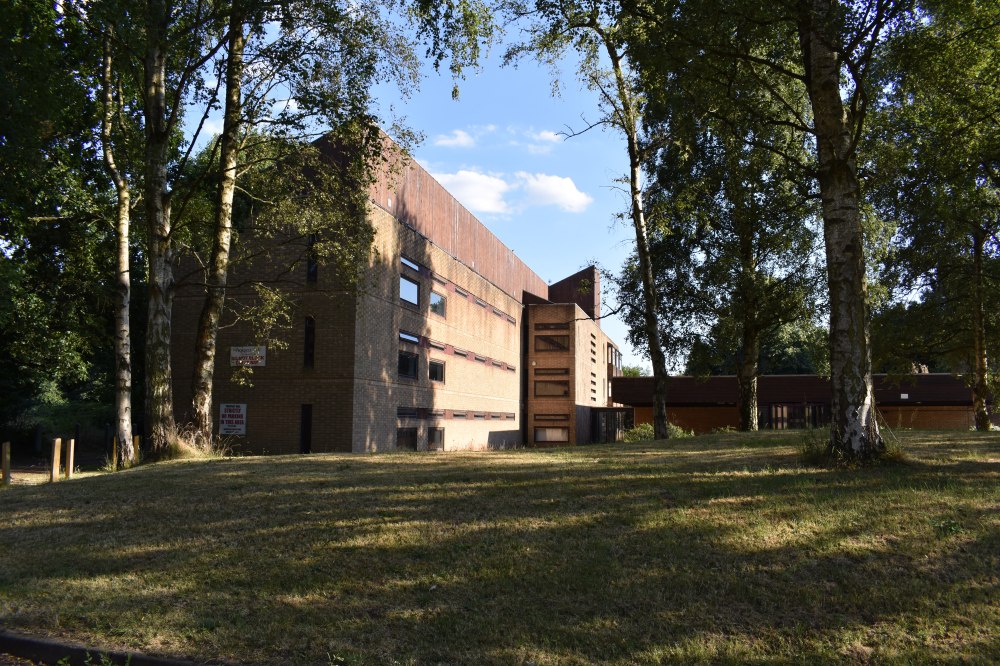

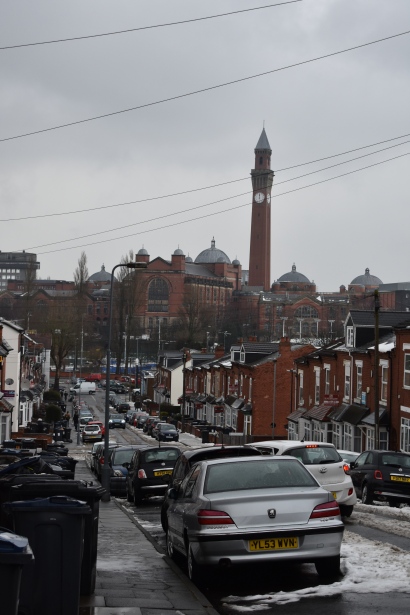
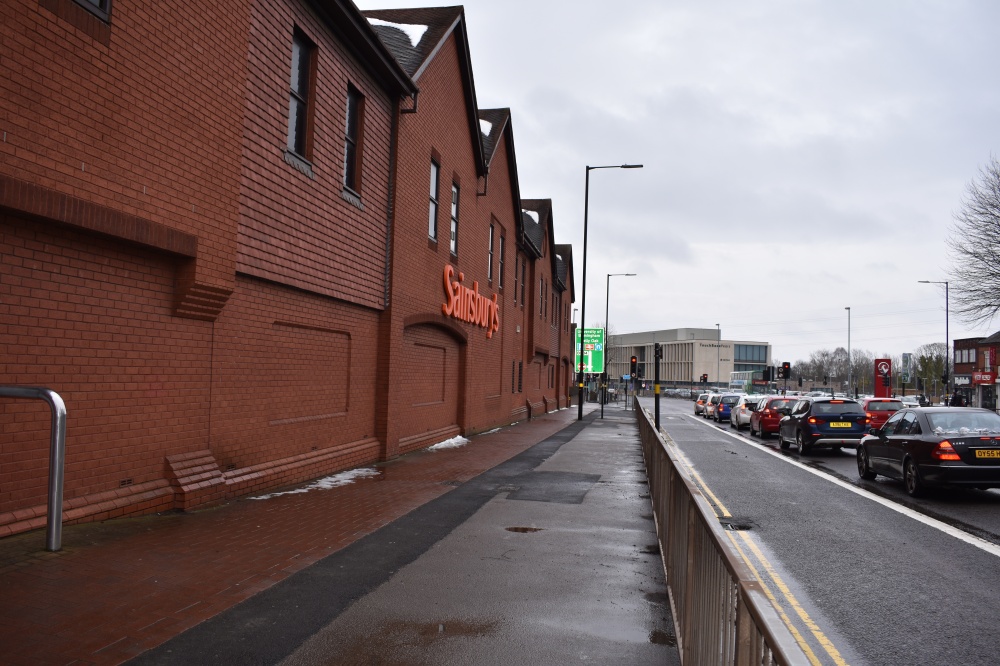
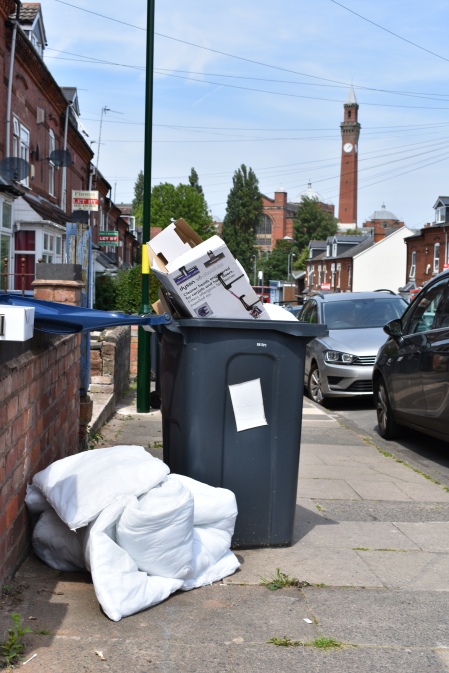
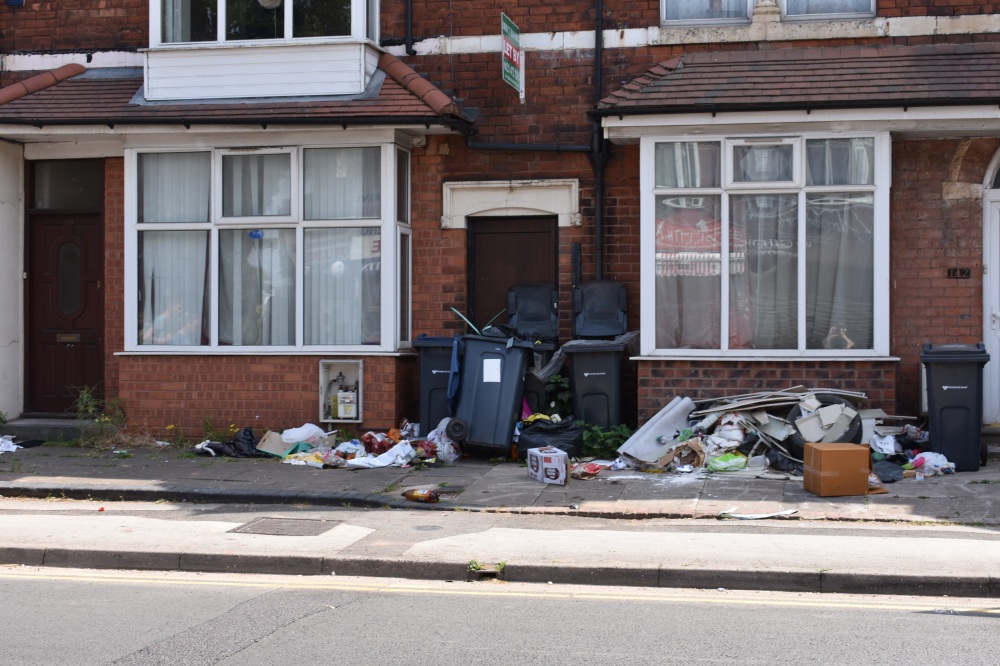
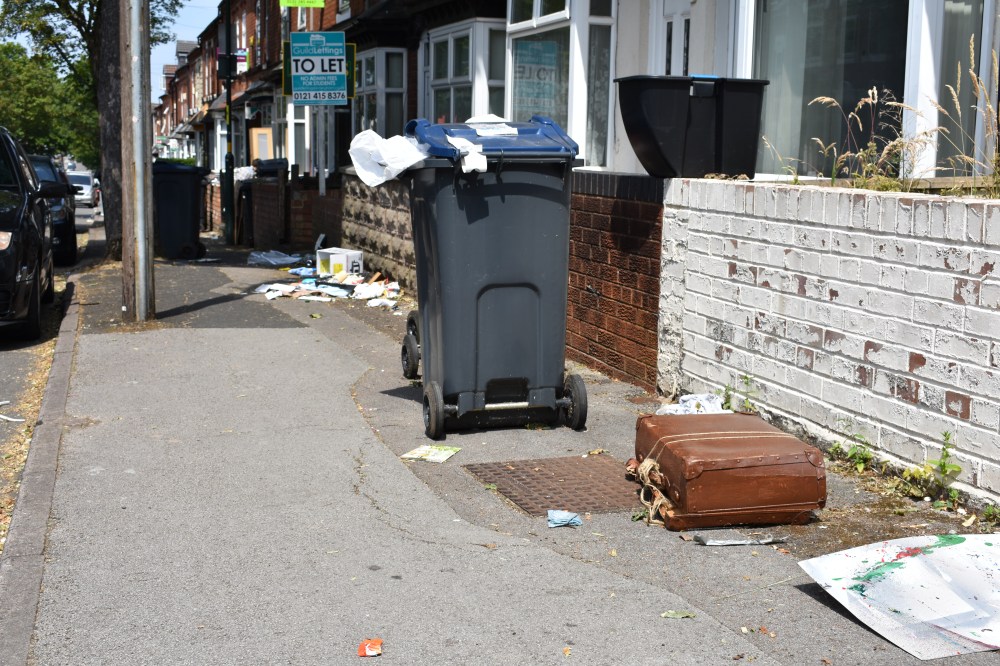
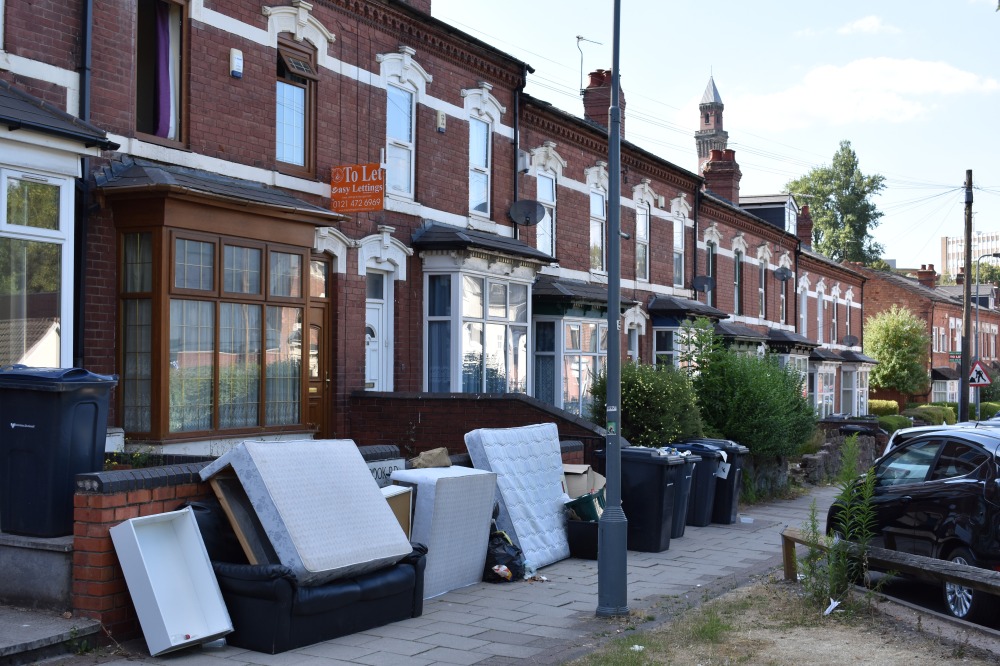
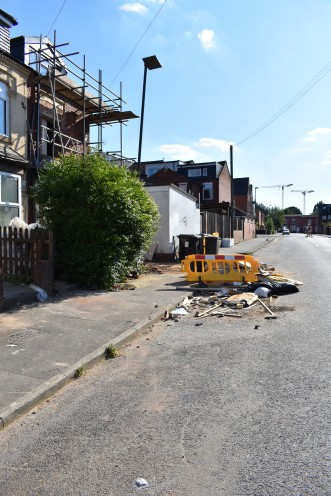
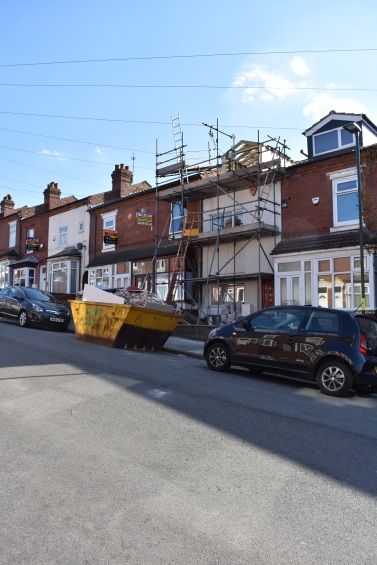
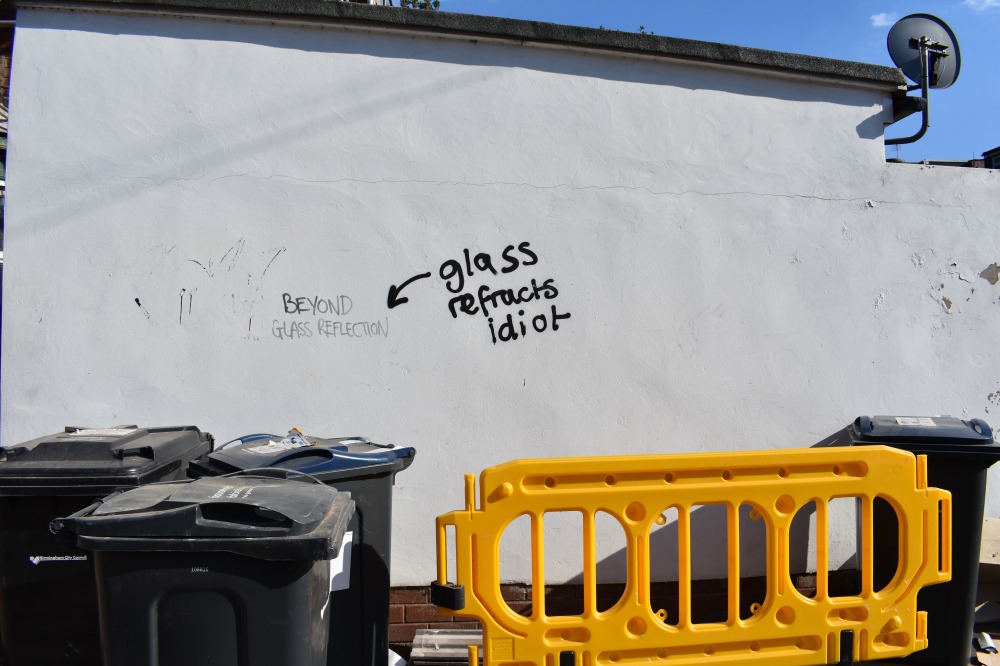
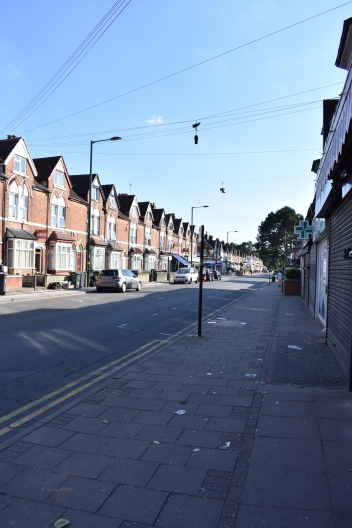
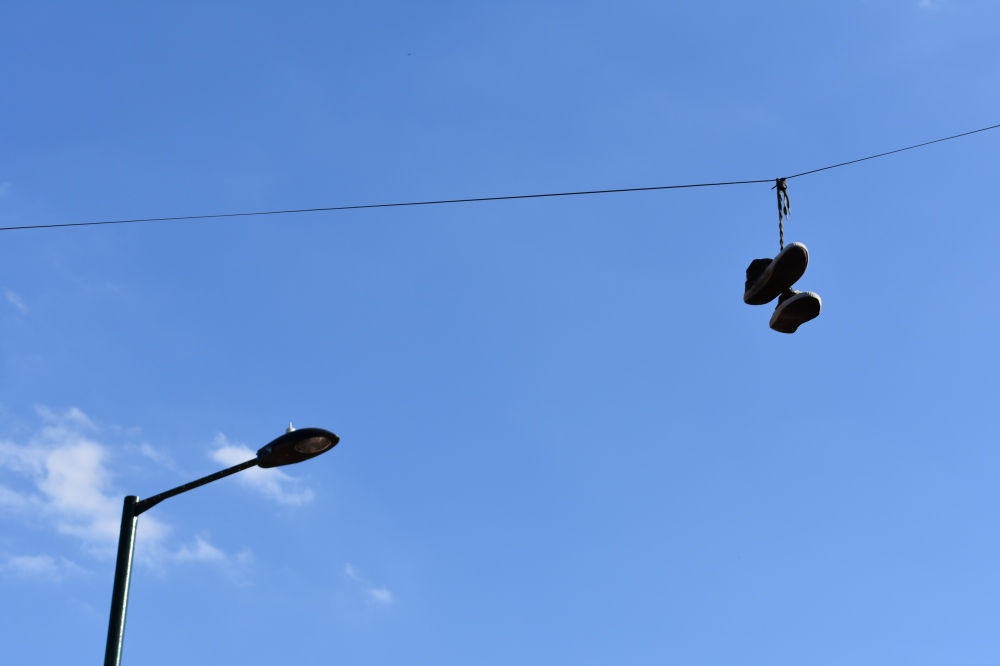

 Josh Allen
Josh Allen 
